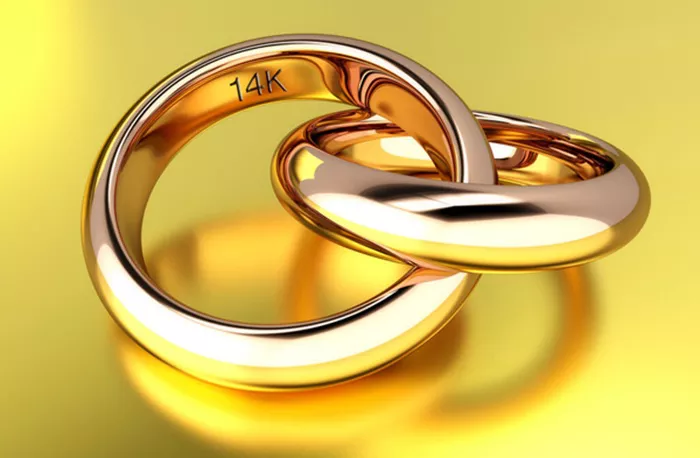Gold is a precious metal valued for its beauty, rarity, and utility in various applications, including jewelry, electronics, and investment. When discussing gold jewelry, you may encounter terms like “10 karat gold” or “10K gold.” Understanding what 10 karat gold means is essential for making informed decisions about purchasing and valuing gold items. This article will explore the concept of 10 karat gold, its composition, uses, and implications for jewelry and investment.
Understanding Karat and Gold Purity
1. Definition of Karat
The term “karat” (often abbreviated as “K”) is a measure of gold purity. It indicates the proportion of pure gold in an alloy compared to other metals. One karat represents 1/24th of the total weight of the alloy. Therefore, 24 karat gold is considered pure gold, with no other metals mixed in.
2. Gold Purity in 10 Karat Gold
10 Karat Gold Composition: 10 karat gold contains 10 parts pure gold and 14 parts other metals, making it a total of 24 parts. This means that 10 karat gold is composed of approximately 41.7% pure gold and 58.3% other metals, such as copper, silver, or nickel. The formula for calculating the percentage of gold in any karat gold is:
Gold Percentage= Karat Number/ 24× 100
For 10 karat gold
Gold Percentage= 10/ 24× 100= 41.7%
3. Comparison with Other Gold Purities
24 Karat Gold: This is pure gold, containing 99.9% gold content. It is soft and malleable, making it less suitable for durable jewelry.
18 Karat Gold: Contains 75% gold and 25% other metals. It strikes a balance between purity and durability, commonly used in high-end jewelry.
14 Karat Gold: Contains 58.3% gold and 41.7% other metals. It is popular for its durability and affordability compared to higher karat golds.
10 Karat Gold: With only 41.7% gold, 10 karat gold is less pure than 14K, 18K, or 24K gold. It is often chosen for its affordability and durability.
See also: What Is The Current Price Of 1 Oz Of Gold?
Characteristics of 10 Karat Gold
1. Durability
Strength and Hardness: Due to the higher proportion of alloyed metals, 10 karat gold is more durable and harder than higher karat golds. This makes it more resistant to scratching and bending, making it suitable for everyday wear.
2. Color and Appearance
Color Variations: The color of 10 karat gold can vary depending on the types and proportions of the alloy metals used. Common colors include yellow, white, and rose gold. Yellow 10K gold retains a gold-like appearance, while white 10K gold is alloyed with metals like palladium or nickel to give it a silver-like appearance.
3. Affordability
Cost Considerations: 10 karat gold is less expensive than higher karat golds due to its lower gold content. This makes it an attractive option for those looking for gold jewelry at a lower price point.
See also: How Much Is 9999 Gold Worth?
Uses of 10 Karat Gold
1. Jewelry
Common Applications: 10 karat gold is frequently used in jewelry, including rings, necklaces, bracelets, and earrings. Its durability makes it suitable for items that are worn daily, such as wedding bands and engagement rings.
2. Investment
Gold Investment: While 10 karat gold is not typically used as an investment vehicle, it is a popular choice for affordable jewelry. For serious gold investment, higher karat gold or gold bullion is preferred due to its higher purity and intrinsic value.
3. Craftsmanship
Manufacturing: Jewelers use 10 karat gold for crafting items that require a good balance of durability and aesthetic appeal. Its lower gold content allows for more complex designs and settings while maintaining affordability.
Pros and Cons of 10 Karat Gold
1. Advantages
Durability: 10 karat gold’s composition makes it more durable and less prone to damage compared to higher karat golds. This is ideal for jewelry that is subject to daily wear and tear.
Affordability: It offers a cost-effective alternative for those who want the appearance of gold without the higher price tag associated with purer gold.
2. Disadvantages
Lower Gold Content: With only 41.7% gold, 10 karat gold contains less pure gold compared to higher karat options, which may impact its perceived value and desirability among collectors and investors.
Appearance: The color and luster of 10 karat gold may not be as rich or vibrant as higher karat golds, which can affect its overall appearance.
Conclusion
10 karat gold represents a balance between affordability and durability, containing approximately 41.7% pure gold and 58.3% other metals. It is a popular choice for everyday jewelry due to its strength and resistance to wear. While it may not offer the same level of purity or prestige as higher karat golds, its lower cost and durability make it an appealing option for many consumers. Understanding the composition and characteristics of 10 karat gold can help individuals make informed decisions about their jewelry purchases and investments.
Related Topics:

